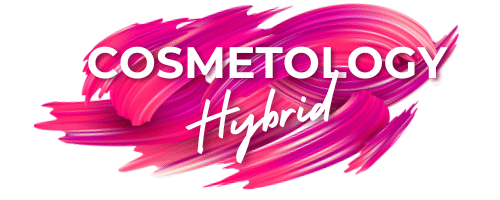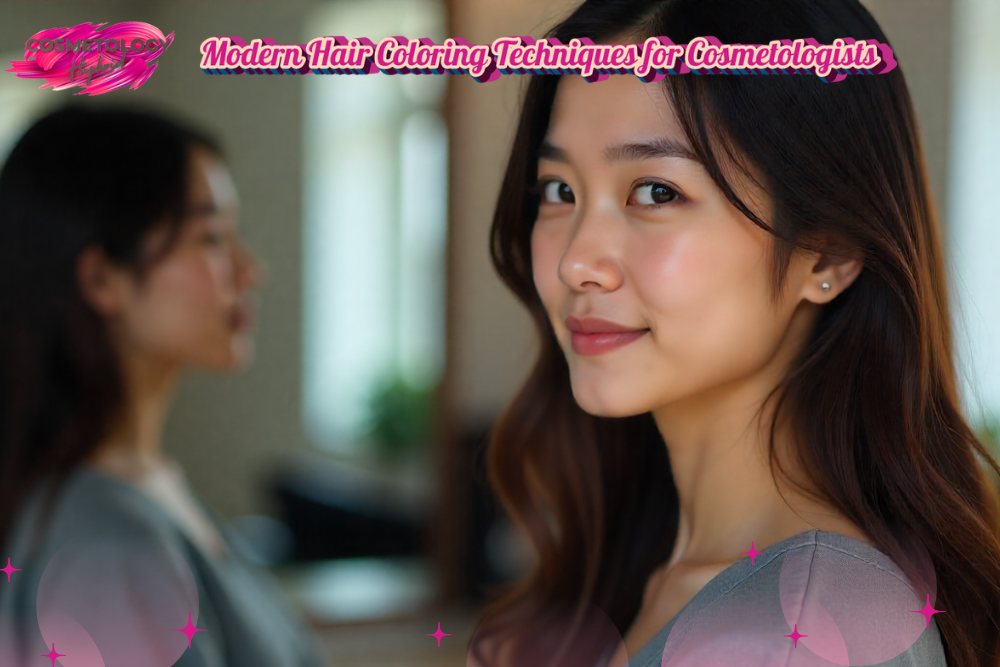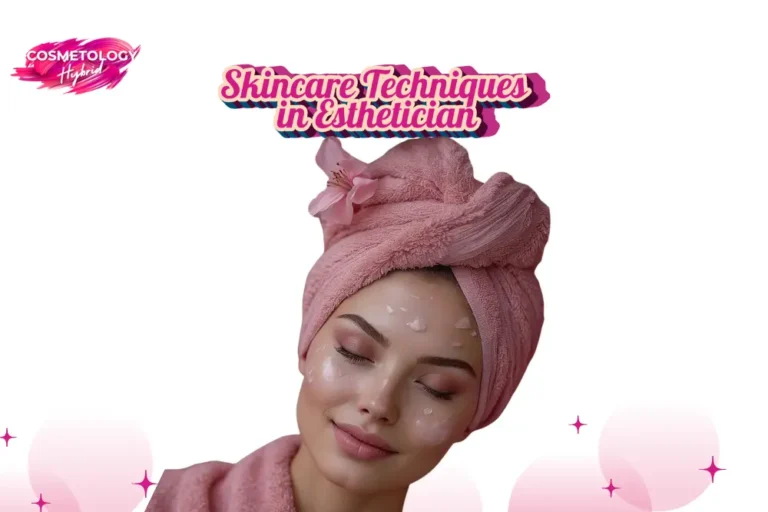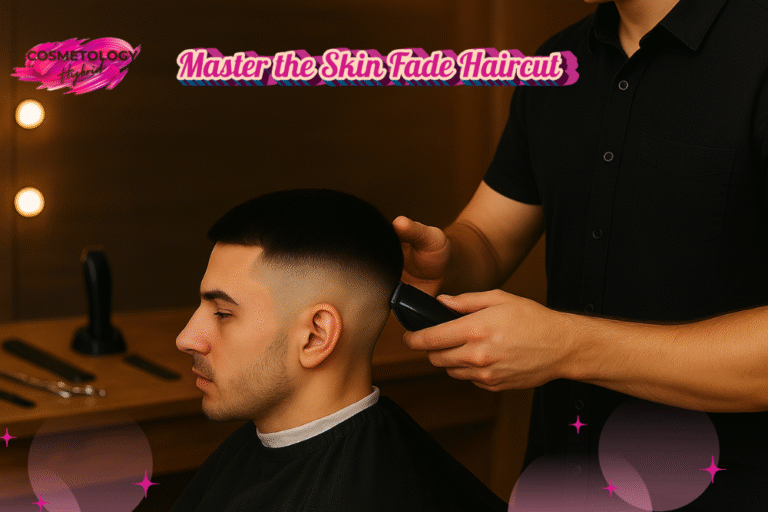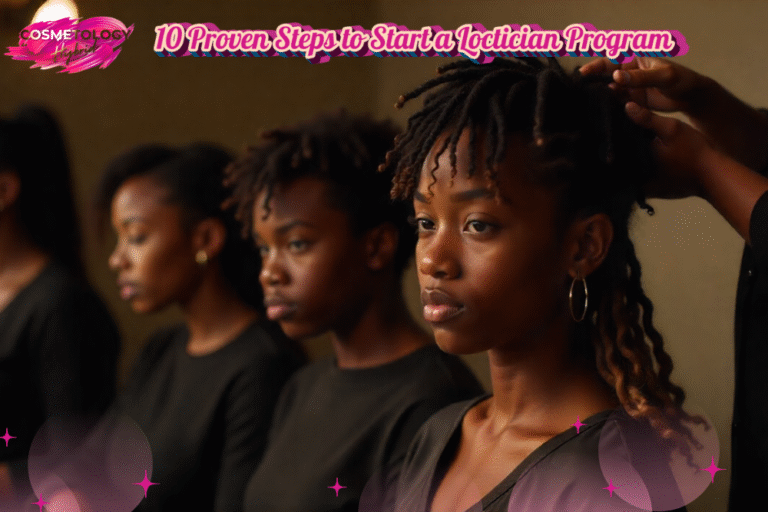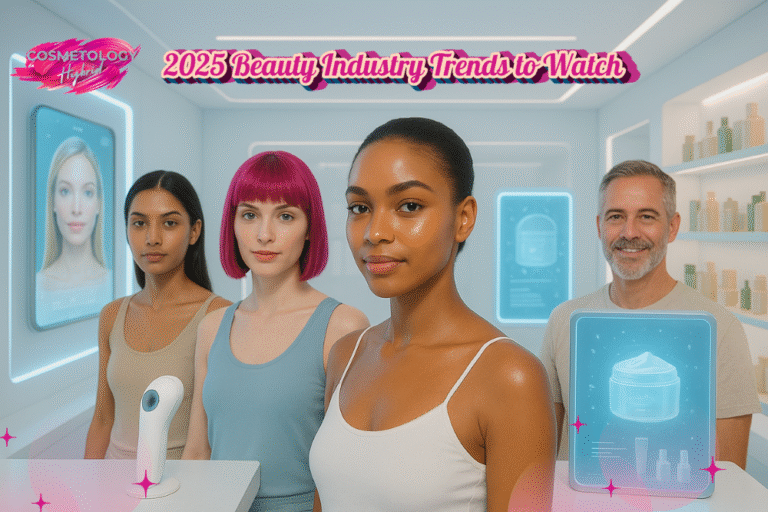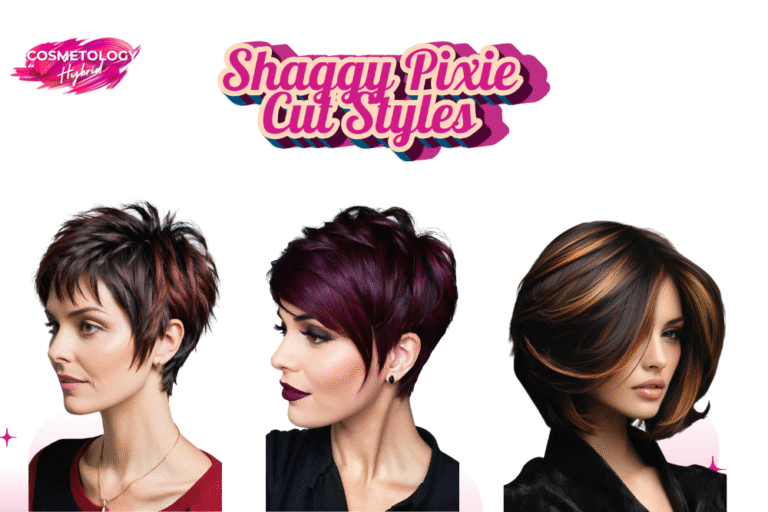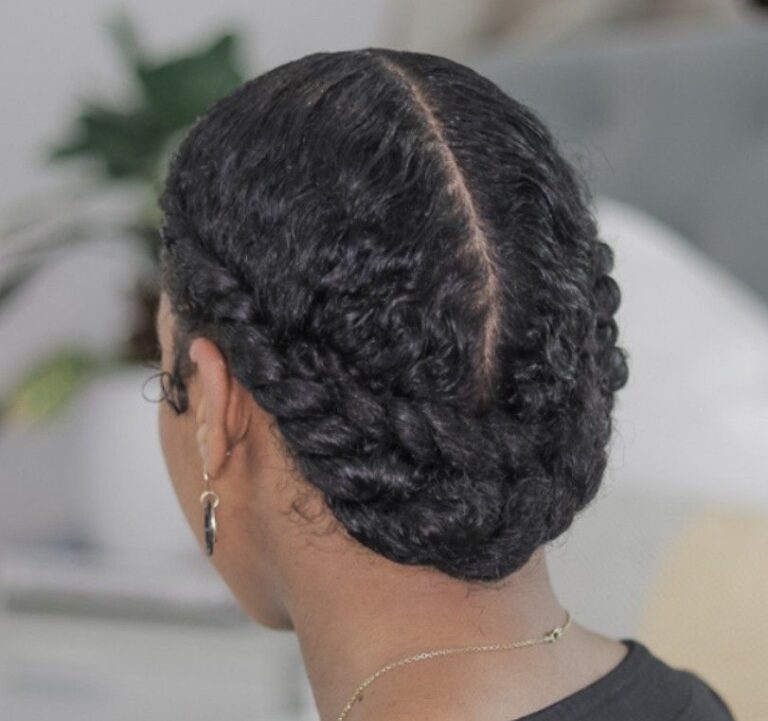Introduction to Modern Hair Coloring
Here’s the thing, Modern Hair Coloring Techniques for Cosmetologists ask for skill and taste, not guesswork. Balayage and professional hair color methods are staples now, and clients expect the result to suit their face, life, and routine. This first step sets the whole service apart.
Let’s break it down, salons have become labs and studios at once. Stylists mix chemistry with color theory, they test tone and porosity, they map the cut before color. That planning protects hair and creates a look that lasts and flatters.
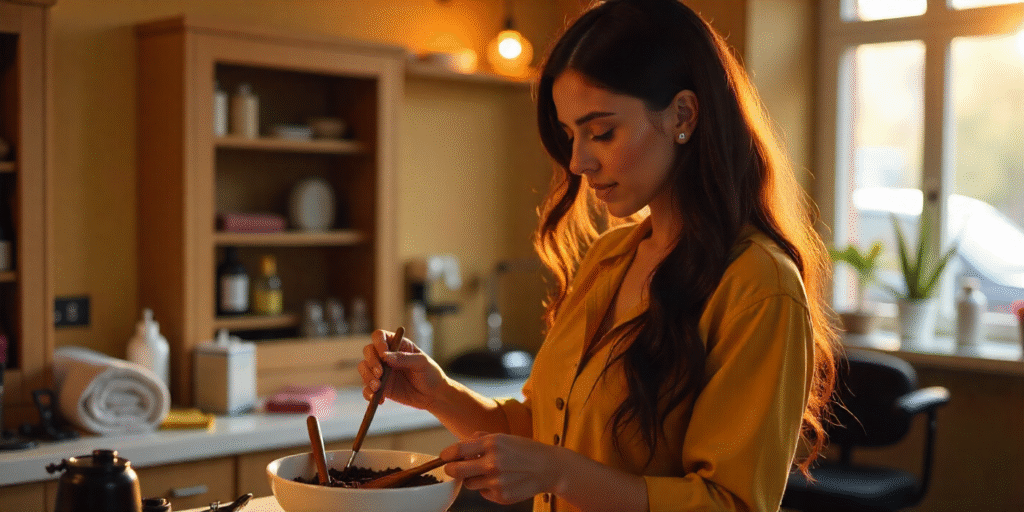
Popular Modern Hair Coloring Techniques
There are a few methods in Modern Hair Coloring Techniques for Cosmetologists that change the way color appears and is photographed. While color melting combines several tones to make transitions appear seamless, balayage and ombre provide a lived-in finish.
Quick Facts Table
| Technique | Aim | Best For |
| Balayage | Natural, painted highlights | Low-maintenance sun-kissed look |
| Ombre | Root to tip gradient | Dramatic length contrast |
| Color Melting | Seamless tone fusion | Multi-dimensional finishes |
| Highlights | Targeted brightness | Lift and contrast |
| Fantasy Colors | Bold pigments | Short-term style statement |
Balayage and Freehand Painting
Balayage is painted, not placed in foil, so the result feels sunlit and soft. hair color blending and foil application technique contrast with balayage in process, but balayage wins for natural grow-out and low upkeep.
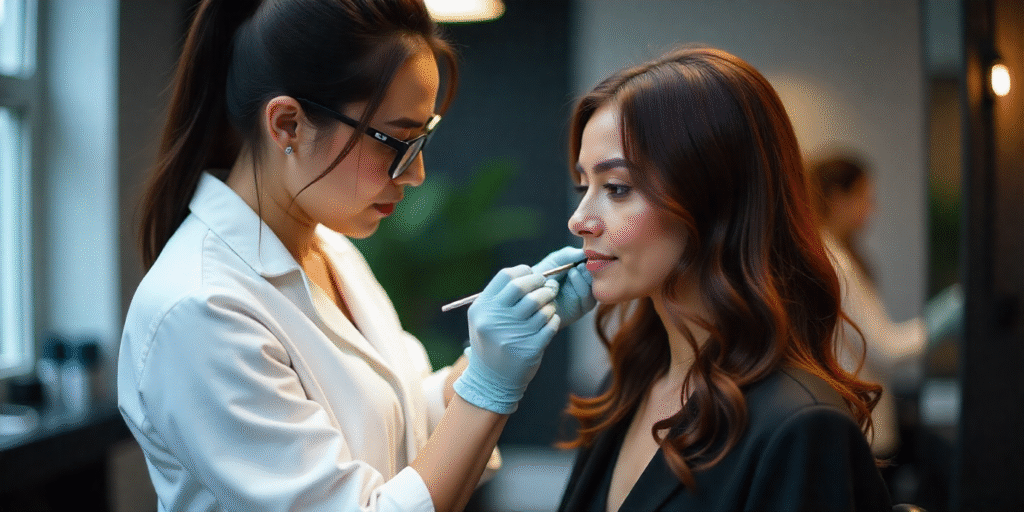
Ombre, Sombre, and Color Melting
Ombre is a clear dark to light fade, sombre softens that fade into muted tones. Color correction in salons often uses color melting to fix banding and create a smooth gradient on varied bases.
Tools and Products Every Cosmetologist Needs
Here’s the thing, the right kit matters as much as the technique. Professional colorists rely on professional hair dyes and lighteners, accurate scales, mixing bowls, applicators, and foils for control. Cheap products give inconsistent lift and more damage.
What this really means is investing in bond-building systems and salon-grade developers. bond-builders and ammonia-free dyes reduce breakage during bleach and lift, so clients leave with hair that looks strong and shiny.
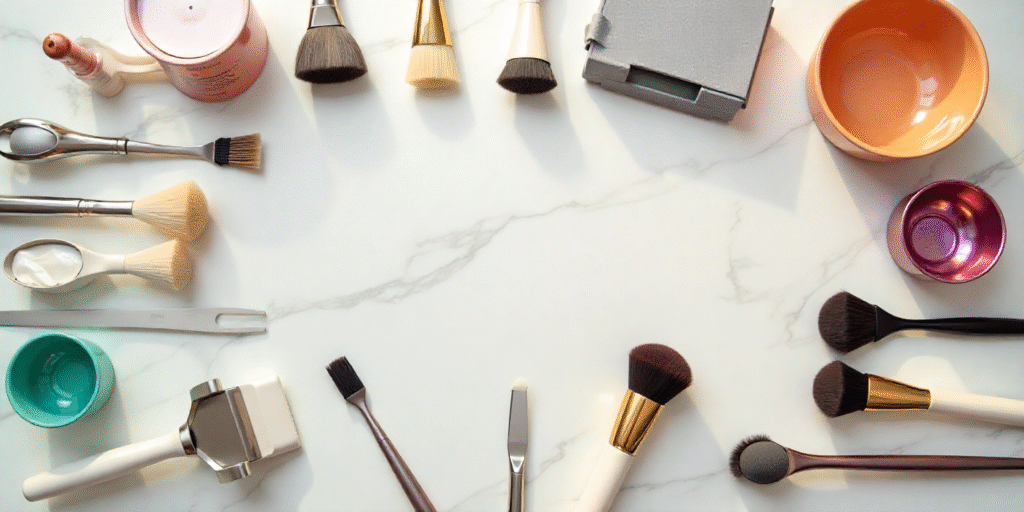
Techniques for Different Hair Types and Textures
Fine and straight hair can lose dimension with a flat color. Multi-tone placement, lowlights, and hair color blending create movement and the illusion of density without over processing fragile strands.
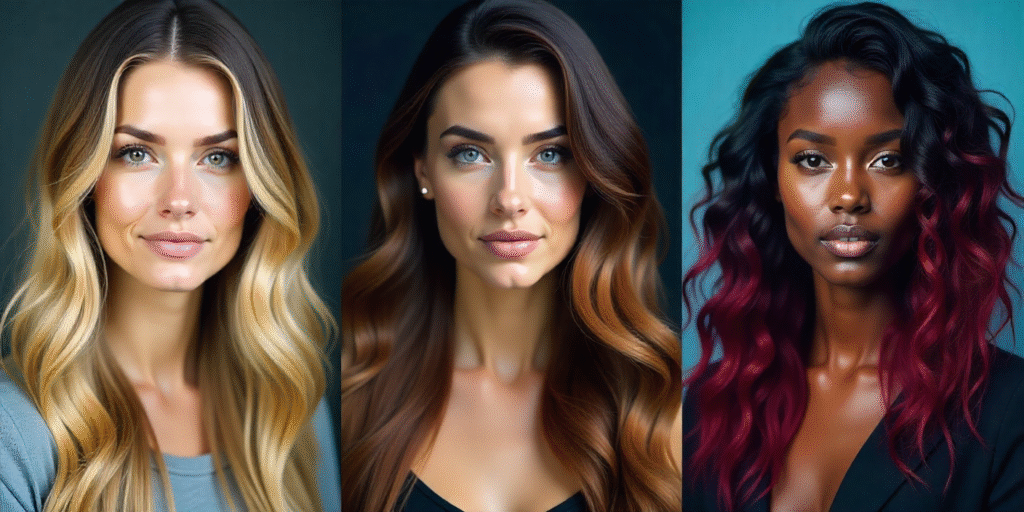
Safety and Best Practices in Hair Coloring
Safety matters. Always perform patch tests and strand tests before full application. Use ammonia-free dyes when possible, pair bleach with bond-builders, and explain aftercare to clients so results stay strong.
What clients want is clear communication. Tell them how much lift is safe, what maintenance looks like, and which products support their home routine. That transparency reduces surprises and protects both scalp and strand.
The Role of Technology in Hair Coloring
Let’s break it down, virtual try-ons and color preview apps let clients see a shade before you lift a strand. That reduces hesitation and saves time when choosing direction. virtual hair color try-on tools are practical tools for consultations.
On top of that, artificial intelligence helps with personalized color formulation by suggesting mixes that match skin tone and existing pigment. AI does not replace skill, it tightens accuracy and speeds up complex formulas.
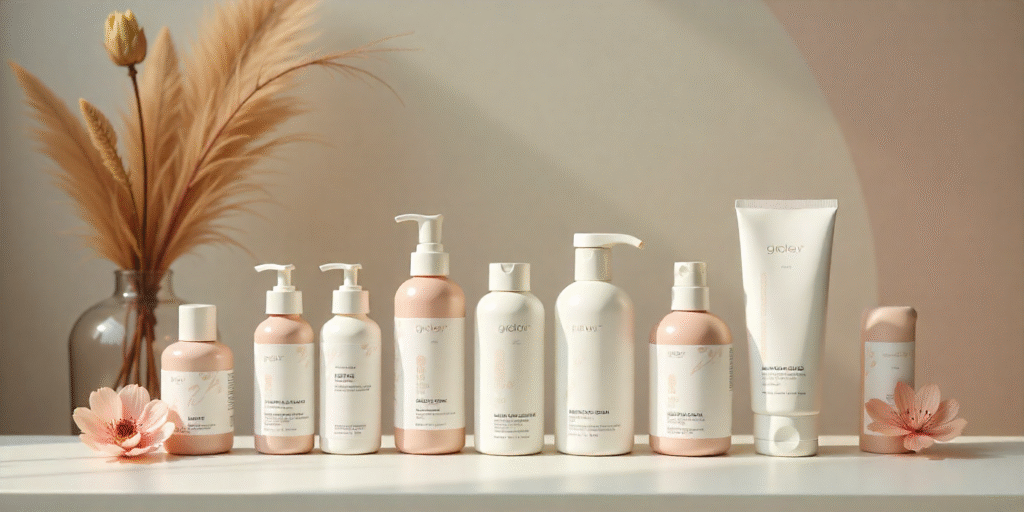
Training and Certification for Cosmetologists
Serious color work needs ongoing training. Courses in advanced hair coloring styles for cosmetologists such as balayage, color correction, and vivid shades sharpen skill sets. Certifications show clients that you invested in education.
Building a career also means documenting results. Before-and-after photos, honest reviews, and a clear service menu tell clients what to expect. That professional presentation builds steady clientele.
Future Trends in Hair Coloring
Sustainability is not a fad. Salons adopting eco-friendly hair products and refill systems see rising client interest. Plant-based dye components and recyclable packaging are already shaping product roadmaps.
Temporary pigments and washable formulas keep color playful and low-commitment. vivid and fantasy shades in wash-out forms let younger clients experiment, while permanent methods stay for those seeking longevity.
Conclusion
Modern Hair Coloring Techniques for Cosmetologists combine creativity with care, and the bar keeps moving up. Keep learning, pick products that protect hair, and customize placement by texture and lifestyle to win trust and repeat business.
What this really means is this, a stylist who blends skill with smart product choices will consistently deliver looks clients want and hair they can keep healthy.
FAQs
Q1: What are modern hair coloring techniques for cosmetologists, in short?
Balayage, ombre, color melting, highlights, and fantasy colors are the go-to methods.
Q2: Which method looks most natural?
Balayage looks the most natural because it imitates sunlight on hair.
Q3: How do cosmetologists prevent hair damage during coloring?
They use bond-builders, ammonia-free dyes, and strand tests to limit overprocessing.
Q4: Can all hair types use modern coloring methods?
Yes, but curly and fine hair need different prep and placement to keep texture safe.
Q5: What trends will shape hair coloring next year?
Expect more eco-friendly hair products and smarter personalized color formulation via AI.
